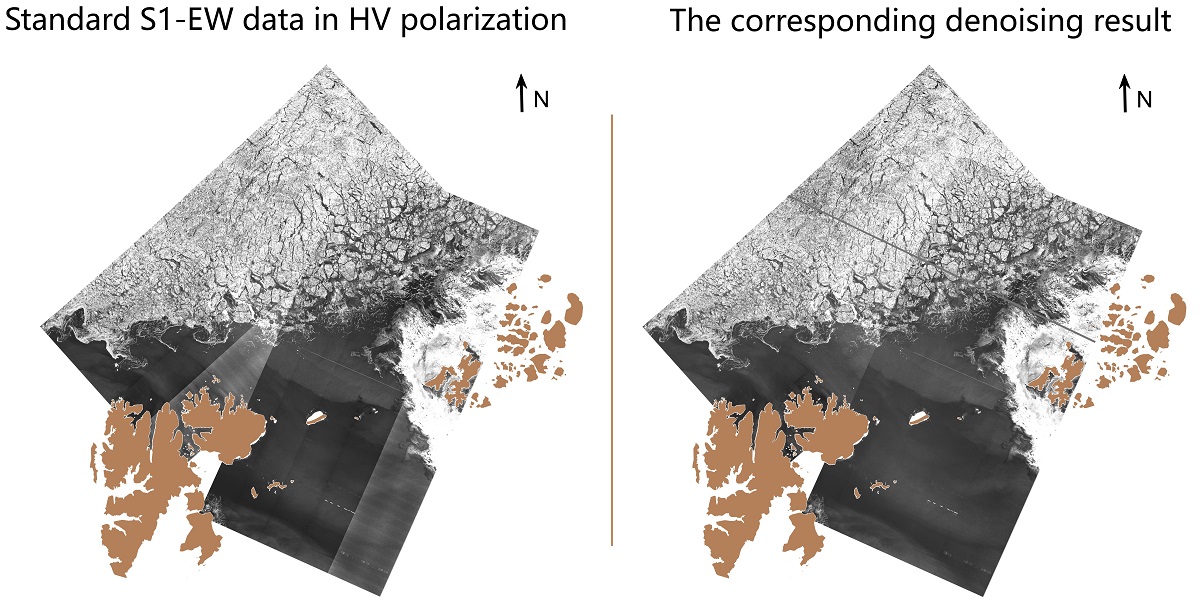Sentinel-1 (S1) extra-wide (EW) swath data in cross-polarization (horizontal-vertical, HV or vertical-horizontal, VH) are strongly affected by the scalloping effect and thermal noise, particularly over areas with weak backscattered signals, such as sea surfaces. Although noise vectors in both the azimuth and range directions are provided in the standard S1 EW data for subtraction, the residual thermal noise still significantly affects sea ice detection by the EW data. In this paper, we improve the denoising method developed in previous studies to remove the additive noise for the S1 EW data in cross-polarization. Furthermore, we propose a new method for eliminating the residual noise (i.e. multiplicative noise) at the sub-swath boundaries of the EW data, which cannot be well processed by simply subtracting the reconstructed 2-D noise field. The proposed method of removing both the additive and multiplicative noise was applied to EW HV-polarized images processed using different Instrument Processing Facility (IPF) versions. The results suggest that the proposed algorithm significantly improves the quality of EW HV-polarized images under various sea ice conditions and sea states in marginal ice zone (MIZ) of the Arctic. This is of great support for the utilization of cross-polarization SAR images in wide swaths for intensive sea ice monitoring in polar regions.

